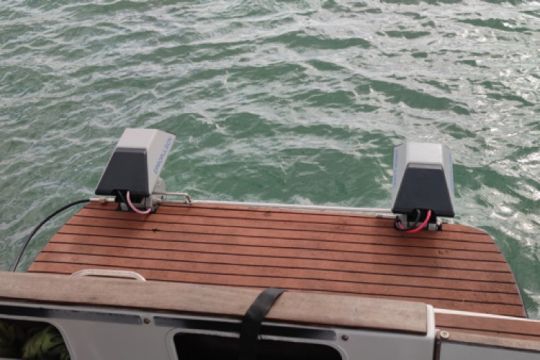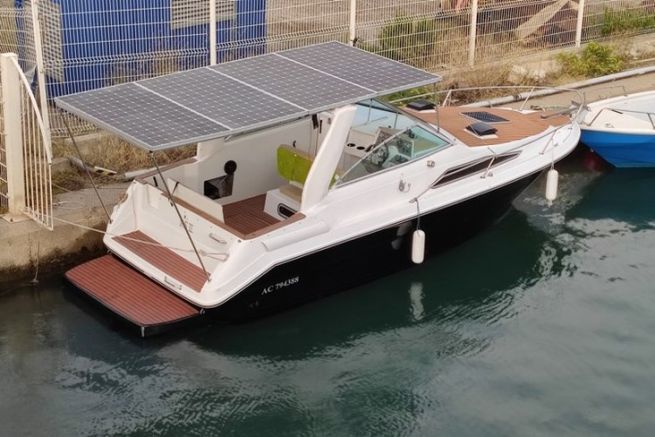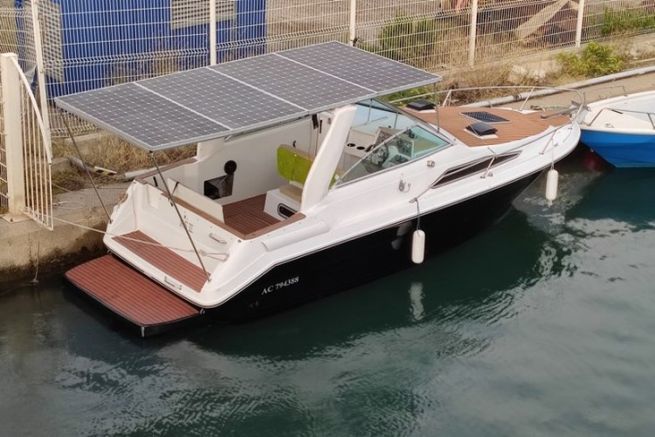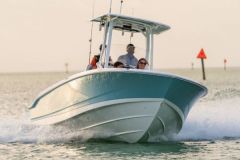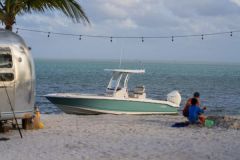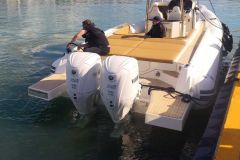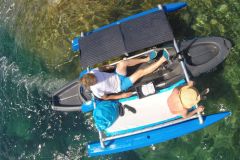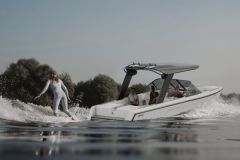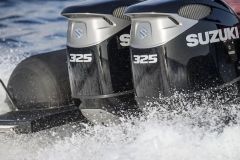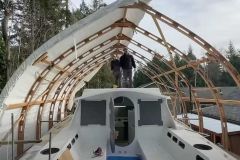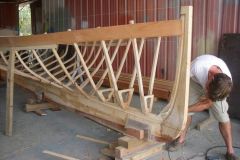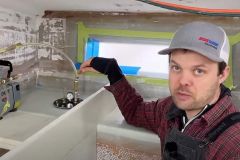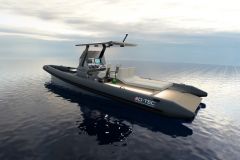This is not Anthony's first boat. The previous one was a Cranchi 34 with two big diesels of more than 300 horsepower. With maintenance bills falling, he wanted to move to something more reasonable. He found on Leboncoin a Searay 220 Sundancer (7.50 m) with its trailer. The Mercruiser gasoline engine doesn't start anymore, but that doesn't scare Anthony, a mechanic by trade.
A purchase at zero euro!
The former owner delivers the boat directly to him in his yard. The transaction is planned for 1000 euros, but finally, it is an exchange with a Quad (broken down by the way) that will finalize the sale. No euro is changed!
Anthony sets out to restart the engine. It will be done quickly since it is just a battery switch that is defective. The engine runs, but Anthony undertakes to renovate it. The 4.3 liter Mercruiser V6 with carburetor will be removed. It will be rinsed, sandblasted and repainted with the original Mercruiser colors: black and red. All gaskets are changed for the occasion. Despite the refurbishment of the engine, Anthony imagines being able to navigate without noise, vibration or smoke. He sets up a kind of hybrid motorization.
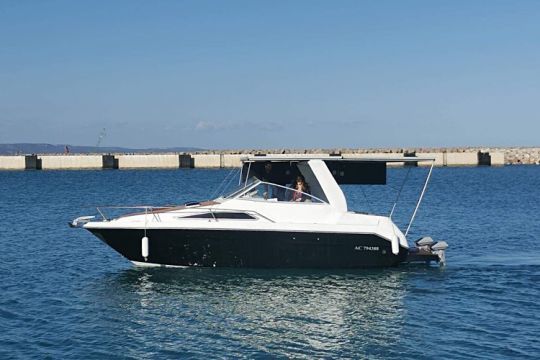
This project starts by covering the boat with 4 solar panels of 435 W each (1740 W in all). It also orders 2 batteries called 2nd generation, batteries recycled from Renault Twizy. Their capacity is 2 x 9000 W. They are Lithium Manganese batteries which work in 48 V. He adds to them a charger-converter and a MPPT regulator. He finds all this material in the terrestrial solutions, material for the houses.
A first test in hybrid propulsion
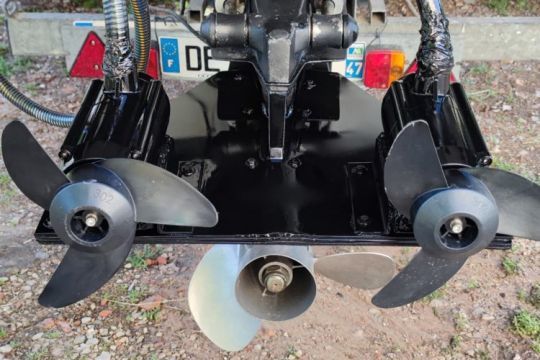
For the propulsion, it imagines to fix the 2 electric motors directly on the plate antiventilation of the base of Z-drive (enlarged for the occasion). Some kind of pod that can be used once the internal combustion engine is switched off. But the thrust of this assembly is a bit weak. In electric motorization, it does not exceed 4 to 5 km/h. Even if the sailor is adept at "slow life", it is still not fast. However, the engines do not interfere when starting the thermal. Once the boat is launched, they stay above the water without dragging. But loaded like this, with the solar panels, the batteries and the thermal engine, the boat has its ass in the water. It leans heavily. Its trim on the back makes the rear platform unusable. We have to find another solution.
Abandonment of the combustion engine

Back home, he will choose to abandon the thermal propulsion to go to the all electric. So the original Mercruiser, its base and all the accessories are going to be put on sale. Three days later, the complete engine is sold for 3500 euros. This budget will be reinvested in 2 electric outboards: ePropulsion Navy 3, motors of 3 kW each, that is to say the equivalent of about 2 x 8 hp in thermal, according to the manufacturers' torque equivalence . The 2 motors are simply installed on the rear deck. The rest of the electrical installation does not change, even if Anthony is testing new batteries to increase the autonomy.
Slowly but without fuel

With this new installation, the performances are better. The maximum speed reaches almost 11 km/h (6 knots). In cruising, by putting the engines at 2 x 1300 W, the boat sails at 9.3 km/h (5 knots). There remains the question of the autonomy which he estimates at approximately 10 h without relying on the load of the solar panels (night navigation for example).
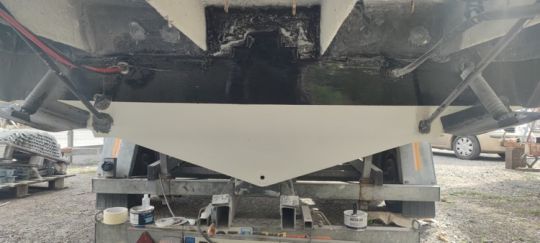
220 V for all the appliances on board
As for comfort, Anthony chose to switch everything to 220 V. Thus, his boat is equipped with an air conditioning, a fridge, a coffee maker, a microwave, even the water heater is in 220 V. All these appliances are powered by the converter which produces 5000 W. And yet, Anthony never plugs his boat into the socket. The solar panels are enough to recharge the battery park after use.
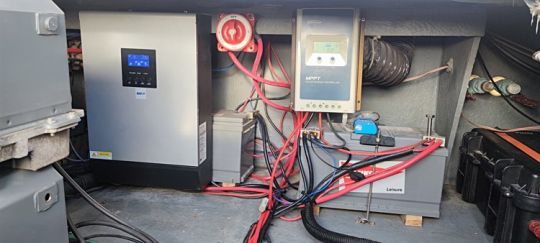
Sailing in Port la Nouvelle (11) where it is stored in the dry port, the boat thus covered with solar panels triggers the interest of the sailors around. Each one makes a comment and links are created. And Anthony is happy to be able to take advantage of his installation without ever going to the pump
